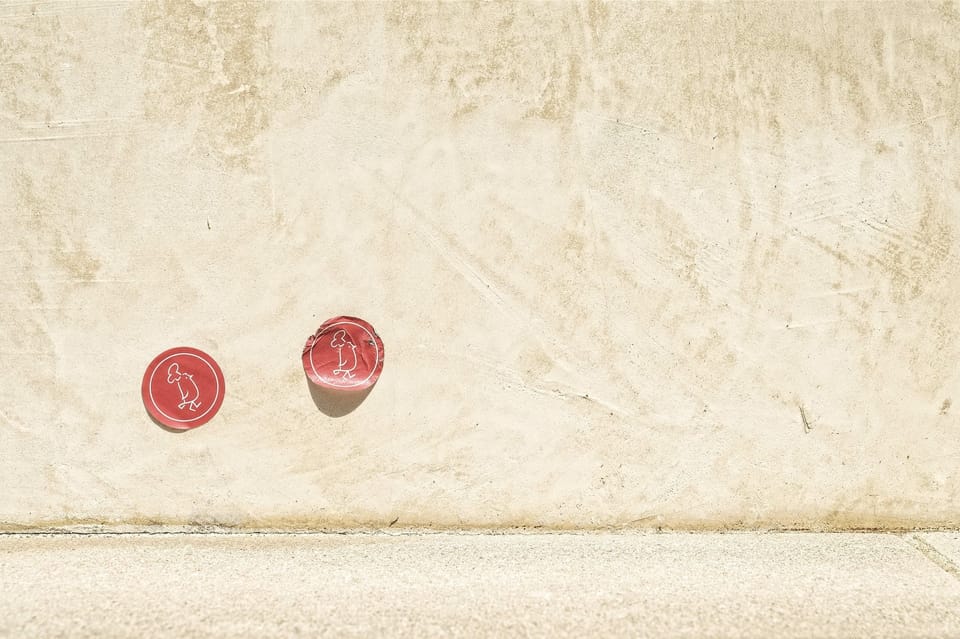Cave art, petroglyphs, and mysterious chickens

Letter No. 69: Includes puzzled scientists, representations of poultry that may have been harmed, and maybe a bit of invention here and there.
The oldest known cave paintings were created more than 65,000 years ago in Maltravieso Cave near Cáceres, Spain. There are many stencils of hands but also geometric shapes and drawings of animals. Scientists dated the paintings in 2018, and their findings were inconvenient for the Homo sapiens–first crowd, because the sapient hominids in question would not arrive in Europe for another 20,000 years. That means our first known works of art were created by Neanderthals. Well, there you go.
About 44,000 years ago, a few of those late-on-the-scene Homo sapiens painted some pigs on a wall on Sulawesi Island, Indonesia. Other ancient paintings around the subterranean world portray deer, bison, mammoths, ibex, lions, and cave bears. And those handprints—some scientists believe the handprints are the signatures of the wildlife artists. For sure they are a record of whoever was down there messing around with ochre. A 2013 study published by American Antiquity of 32 hand prints found in Spain and France determined that, based on the ratios of the size of fingers to hands, 75 percent of the artists were women. You go, cave girl.
Prehistoric cave paintings are also known as petrograms. They are encompassed by a broader category, parietal art, which includes petroglyphs—images incised in or scraped onto a rock face. The earliest dated petroglyphs tend to be many millennia younger, probably because they were executed on exposed rock faces that erode. Ars longa, vita brevis, but erosion longa still.
The image atop this letter is of parietal art I discovered on a wall in 2022. To preserve it from vandals or looters, I will not disclose its precise location, only that I found it in Charleston, South Carolina. Note that the work is a rare combination of petrogram and petroglyph, with some sort of animal incised in a circle of previously applied ochre. The ancient artist left no handprints, so we cannot be sure if the work was done by a man or a woman.
Since I announced my discovery, researchers have posited that the drawings represent some sort of paleolithic fowl. Whether the birds’ depiction commemorates a successful hunt or is meant to acknowledge a totemic avian deity has divided the scientific community. Everyone has been further puzzled by what seems to be atop the birds’ heads. Theories range from a naturally occurring feathery cockade to a hat that may have had religious meaning to the artist(s). Artur Schloesinghaßen of the Max Planck Institute for Empirical Aesthetics has suggested—and not in a fit of jocularity, because anyone who has worked with Dr. Schloesinghaßen knows he does not joke around—that the mysterious addition represents a thought bubble and indicates the artist(s) possessed a theory of mind that included animal sentience. This debate is expected to go on for many years and produce enough dissertations to secure tenure for dozens of university faculty.
Throughout this raging ruckus, numerous researchers have cited the article “Cross-Modality Information Transfer: A Hypothesis about the Relationship among Prehistoric Cave Paintings, Symbolic Thinking, and the Emergence of Language,” published by Frontiers in Psychology on February 20, 2018. In the article’s précis, the authors note:
We argue that cave art is a form of cross-modality information transfer, in which acoustic signals are transformed into symbolic visual representations. This form of information transfer across modalities is an instance of how the symbolic mind of early modern humans was taking shape into concrete, externalized language.
This argument has been applied to the Charleston petrogram/glyphs. In a forceful rebuttal that appeared in Artforum last November, critic Felicity Thistlethorne wrote:
Oh, bullshit. This is art. Simply, gloriously, art. Why does it have to be anything more, especially “cross-modality information transfer?” Must we still engage in this pedagogical masturbatory reductionism? The Charleston Glyphs are magnificent in their command of line, their bold minimalism, their sacred geometry (those circles!), and their enigmatic arrangement on the rocky canvas. Most striking is the stunning sense of movement conveyed by the placement of the limbs. And the multi-dimensionality: Those circles seem to launch off of the rock face! If nothing else, the sophistication of this work should caution us regarding our careless use of words such as “primitive.”
On a side note, someone named TheToddster18 posted on the social media platform X (September 2, 2023): “Oh, yeah, I stuck those stickers on there a coupla weeks ago. Just for lulz. I was pretty drunk, I think.” Alerted to the post by a reporter from Ars Technica, a spokesperson from Harvard University, who appears to be a T.A. in the university’s paleontology department, replied, “Oh, please. Why would you choose to believe a pseudonymous poster on Twitter, I mean X or whatever, over researchers who have dedicated their professional lives to the study of these disciplines?”
So the matter rests, for the time being.
Member discussion